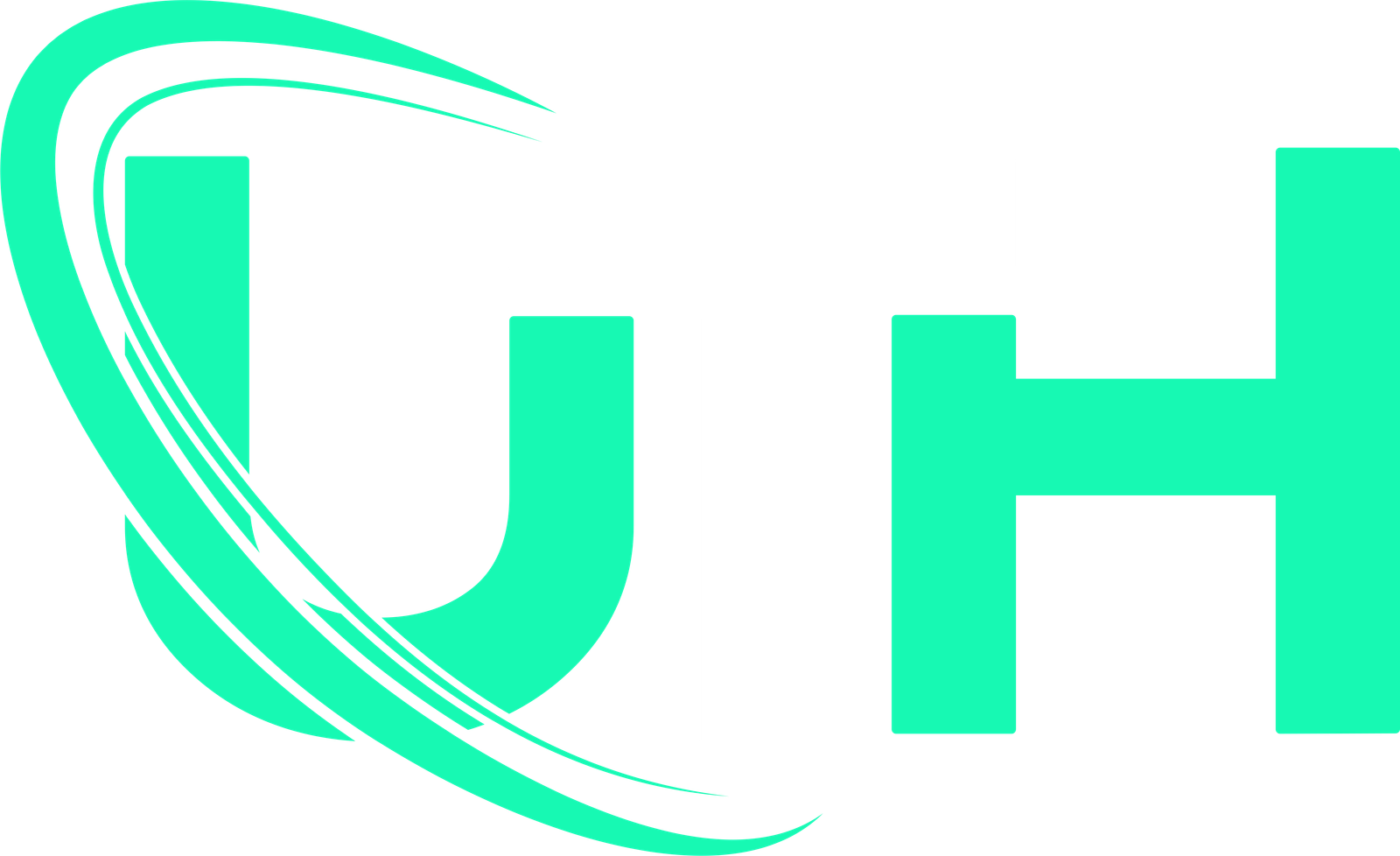Cybersecurity
Understanding the Zscaler Competitors Landscape: A Deep Dive
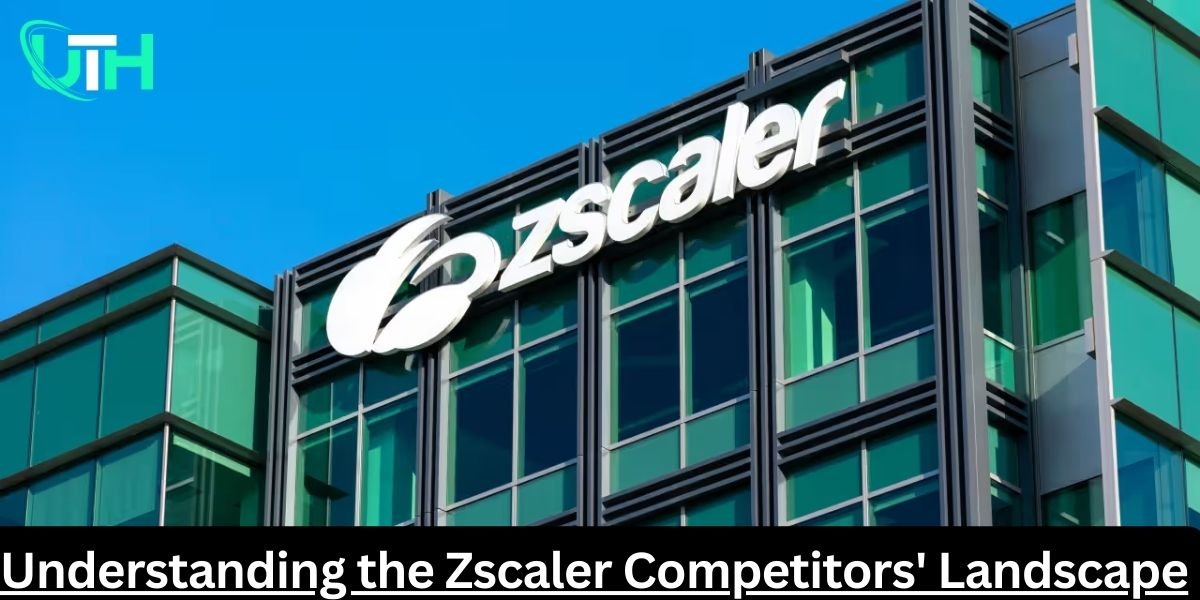
The shift towards cloud-based architectures and remote work has fundamentally changed how organizations approach security. This evolution has driven the adoption of Secure Access Service Edge (SASE), a framework that converges network and security functions into a unified, cloud-delivered service. Zscaler has emerged as a prominent leader in this space, offering a comprehensive suite of cloud-native security solutions. However, a dynamic Zscaler Competitors landscape exists, with various players competing for market share. This article provides a detailed analysis of Zscaler’s major competitors, examining their strengths, weaknesses, and market positioning.
What Is Zscaler?
Zscaler is a cloud-based cybersecurity company that helps organizations securely connect users, devices, and applications — regardless of location. Instead of routing traffic through traditional on-premise hardware like firewalls or VPNs, Zscaler delivers security directly through the cloud.
Established in 2007 and based in San Jose, California, Zscaler runs one of the most extensive cloud-based security platforms globally. It processes over 200 billion transactions per day, blocking 150+ million threats daily across 185+ data centers worldwide.
Key Services and Products Offered by Zscaler
Zscaler Internet Access (ZIA)
ZIA acts as a secure internet gateway that inspects all outbound internet traffic. It helps protect users from malware, phishing, ransomware, and unauthorized data access — whether users are working from the office or remotely.
Key Features:
- Secure Web Gateway (SWG)
- Cloud Firewall
- Cloud-based DNS Security
- Data Loss Prevention (DLP)
- SSL Inspection
- Cloud Access Security Broker (CASB)
Zscaler Private Access (ZPA)
ZPA replaces traditional VPNs by providing Zero Trust Network Access to internal applications. It ensures that users only access apps they are authorized to use — without ever exposing the network.
Key Features:
- Zero Trust architecture
- Application segmentation (not network access)
- Encrypted connections
- Scalable and easy to deploy
- There is no need to place users on the corporate network
Zscaler and Zero Trust
At the heart of Zscaler’s philosophy is the zero-trust model. This means “never trust, always verify.” Instead of assuming internal traffic is safe, Zscaler verifies each user and device before granting access — minimizing the risk of breaches.
Cloud-Native Architecture
Unlike traditional security tools that rely on hardware appliances, Zscaler’s services are 100% cloud-delivered. This offers:
- Scalability – Easily supports millions of users.
- Faster performance – Traffic is routed through the closest Zscaler data center.
- Lower costs – No need for hardware, maintenance, or upgrades.
- High availability – Redundant, globally distributed infrastructure.
Benefits of Using Zscaler
- Improved Protection – Instant defense against threats and secure data handling.
- Smooth Remote Connectivity – Perfect fit for hybrid and work-from-home setups.
- Reduced Latency – Faster access to cloud apps.
- Lower Operational Costs – Eliminate the need for on-prem security hardware.
- Improved User Experience – Transparent and unobtrusive security.
Who Uses Zscaler?
Zscaler is trusted by over 7,500 organizations globally, including more than 500 Forbes Global 2000 companies. It serves industries such as:
- Finance
- Healthcare
- Government
- Education
- Retail
- Manufacturing
Must Read: Change Healthcare Data Breach Letter: Were you Alerted?
Zscaler Integrations
Zscaler integrates seamlessly with major identity and cloud service providers, including:
- Microsoft 365 and Azure AD
- Google Workspace
- AWS, Azure, GCP
- Okta
- CrowdStrike
- ServiceNow
These integrations enhance automation, threat intelligence, and user identity control.
Major Zscaler Competitors: Categories and Analysis:
The competitive landscape for Zscaler can be broadly categorized into:
1. Pure-Play SASE/SSE Vendors
These companies, like Zscaler, have built their platforms with a cloud-first approach, focusing on converging security and networking.
Netskope
Netskope has established itself as a key player in cloud security through its powerful Cloud Access Security Broker (CASB) features. It provides detailed oversight and management of cloud-based applications, focusing on data protection and intelligent analytics. The company stands out for its expertise in SaaS security and its strong capabilities in preventing data loss across multiple cloud platforms.
- Rating: PeerSpot users give Netskope an average rating of 8.4 out of 10, with 97% willing to recommend it.
- Example: A financial services company uses Netskope to enforce DLP policies across its Microsoft 365 and Salesforce environments, preventing sensitive customer data from being shared inappropriately.
Cato Networks
Cato Networks distinguishes itself with its single-pass architecture that tightly integrates SD-WAN and security services. They offer a globally distributed cloud backbone, optimizing both network connectivity and security. Cato’s strength is its converged approach, simplifying network and data security management for organizations with distributed locations.
- Rating: SoftwareReviews gives Cato SASE Cloud a 95% positive emotional footprint, with 93% of users likely to recommend it.
- Example: A multinational retail company leverages Cato Networks to connect its global stores and headquarters, benefiting from integrated SD-WAN for optimized application performance and built-in security features.
Fortinet (FortiSASE)
Leveraging its long-standing expertise in network security, Fortinet offers a comprehensive SASE solution under the FortiSASE umbrella. It integrates its strong next-generation firewall capabilities with SD-WAN and endpoint protection. Fortinet stands out for its extensive range of security solutions and its well-integrated security architecture.
- Rating: SoftwareReviews recognizes Fortinet SASE as a 2025 Data Quadrant Gold Medalist, with 90% of users likely to recommend it.
- Example: A manufacturing firm with both on-premises and cloud infrastructure uses FortiSASE to extend its familiar Fortinet security policies to its remote users and cloud workloads.
Palo Alto Networks (Prisma Access)
A well-established security vendor, Palo Alto Networks offers Prisma Access as its comprehensive SASE platform. Building upon its next-generation firewall leadership, Prisma Access provides a robust set of integrated security services. Its strength lies in its advanced threat prevention capabilities and comprehensive security ecosystem.
- Rating: SoftwareReviews reports that 88% of Prisma SASE users are likely to recommend it.
- Example: A large healthcare organization relies on Prisma Access to secure its remote workforce and protect sensitive patient data with its advanced threat intelligence and granular access controls.
Cloudflare
Primarily known for its Content Delivery Network (CDN) and DDoS protection, Cloudflare has expanded into the SSE space with offerings like Secure Web Gateway and Zero Trust access. Cloudflare’s strength lies in its massive global network, providing exceptional performance and scalability, along with integrated security services.
- Rating: Gartner Peer Insights shows a generally positive sentiment towards Cloudflare, with many users highlighting its ease of deployment and robust platform.
- Example: An e-commerce company utilizes Cloudflare for its website performance and security, also leveraging its Zero Trust services to secure internal applications accessed by remote employees.
Sangfor (Sangfor Access & Zero Trust Guard)
Sangfor offers integrated SASE and ZTNA solutions designed for modern work environments. Their focus is on detailed access management and advanced threat detection powered by AI.
Dope Security
A newer entrant, Dope Security focuses on a lightweight, endpoint-delivered Secure Web Gateway, emphasizing user experience and ease of deployment.
2. Traditional Security Vendors Expanding into SASE/SSE
These established companies are evolving their product lines to offer cloud-delivered security services, often through a combination of acquisitions and organic development.
Cisco (Cisco Umbrella & Secure Access by Duo)
Cisco, a networking giant, offers cloud security through Cisco Umbrella (SWG, DNS-layer security) and Zero Trust through Duo Security (multi-factor authentication and access management). Cisco’s strength lies in its broad security portfolio, extensive customer base, and deep integration within its networking ecosystem.
- Rating: Cisco Umbrella holds an average score of 8.8 out of 10 from PeerSpot users, with 97% saying they would recommend the platform.
- Example: A large enterprise heavily invested in Cisco networking infrastructure uses Cisco Umbrella to extend its security controls to remote users and branch offices.
Forcepoint
Forcepoint’s SASE solution prioritizes safeguarding data and addressing risks posed by internal threats. They emphasize behavioral analytics and adaptive protection to prevent data breaches and malicious insider activity.
- Rating: Gartner Peer Insights shows 91% of users recommending Forcepoint.
- Example: A government agency utilizes Forcepoint’s SASE offering to monitor user behavior and prevent sensitive government data from being exfiltrated.
Check Point Software Technologies (Harmony SASE & CloudGuard)
Check Point provides a wide range of security solutions, with Harmony SASE addressing the SASE market and CloudGuard focusing on cloud security. Their strength lies in their long history of threat intelligence and comprehensive security capabilities.
- Rating: Gartner Peer Insights reports a 4.6 out of 5-star rating for Check Point Harmony SASE.
- Example: A global manufacturing company uses Check Point Harmony SASE to secure its remote workers and branch offices, leveraging its strong threat prevention and unified management console.
Microsoft (Azure Security Services)
Microsoft offers a broad array of security services within its Azure cloud platform. While not a pure-play SASE vendor, Azure Security Services can address many SASE requirements, particularly for organizations heavily invested in the Microsoft ecosystem.
- Rating: Microsoft Azure has a high overall rating on Gartner Peer Insights, with security being a key component.
- Example: An organization fully utilizing Microsoft Azure can leverage Azure Security Services like Azure Firewall, Azure AD Conditional Access, and Microsoft Defender for Cloud to build a SASE-like architecture within the Azure environment.
Important Note: Here SASE stands for “Secure Access Service Edge” and SSE stands for “Security Service Edge”.
3. Specialized Security Vendors
These companies focus on specific security areas that overlap with Zscaler’s offerings, such as web security or secure access.
Akamai Technologies (Secure Internet Access Enterprise)
Primarily a CDN provider, Akamai also offers robust web security solutions like Secure Internet Access Enterprise, competing with Zscaler’s web security components.
- Rating: Akamai Secure Internet Access Enterprise has earned an average rating of 9.0 out of 10 from users on PeerSpot.
Citrix
Citrix focuses on secure remote access and application delivery, with solutions that overlap with Zscaler’s ZTNA and secure web gateway functionalities, particularly for organizations heavily invested in Citrix virtualized environments.
- Rating: Gartner Peer Insights shows a 4.4 out of 5-star rating for Citrix Secure Private Access.
Competitive Strengths and Weaknesses: Zscaler vs. Competitors
Zscaler’s Strengths
- Purpose-Built Cloud-Native Platform: Zscaler was a pioneer in cloud-delivered security and its architecture is inherently designed for scalability and global reach.
- Strong Focus on Zero Trust: Zscaler’s ZPA solution is a mature and well-regarded ZTNA offering.
- Comprehensive SSE Offerings: ZIA provides a broad range of security functions integrated into a single cloud service.
- Global Presence and Robust Infrastructure: Zscaler operates a large and geographically diverse cloud infrastructure.
- Market Leadership: Zscaler is often recognized as a leader in the Secure Service Edge (SSE) category, which forms the security component of SASE. In Q4 2024, Zscaler’s overall company market share improved to approximately 0.31% due to strong revenue growth.
Zscaler’s Potential Weaknesses:
- High Cost: Zscaler can be perceived as a premium solution, potentially making it less accessible to smaller organizations or those with budget constraints.
- Complexity: The breadth of features and configuration options can sometimes lead to complexity for administrators.
- Integration: While Zscaler integrates with many third-party solutions, some customers may desire deeper or more seamless integrations with their existing security and networking tools.
Comparison with Key Competitors
- Netskope: Strengths in CASB and data protection; may lack the fully converged network and security of some SASE platforms.
- Cato Networks: Strong convergence of SD-WAN and security; might require a significant shift in network architecture.
- Fortinet: Comprehensive security portfolio and integrated fabric; SASE offering is an evolution of existing products.
- Palo Alto Networks: Robust threat prevention and established security ecosystem; SASE can be complex to manage for some.
- Cloudflare: Exceptional performance and global network; security offerings are a more recent expansion.
- Cisco: Broad security portfolio and networking integration; SASE offering involves multiple products.
- Forcepoint: Focus on data security and insider risk; SASE may not be as comprehensive in all security areas.
- Check Point: Strong threat intelligence and wide range of security capabilities; SASE is a more recent integration.
Zscaler Competitors: Market Share and Adoption Trends
The Secure Access Service Edge (SASE) market is experiencing significant growth. The global SASE market was valued at USD 4.17 billion in 2024 and is projected to reach USD 25.96 billion by 2033, exhibiting a CAGR of 22.41% during the forecast period (2025-2033). This growth is driven by the increasing adoption of cloud services, the rise of remote work, and the escalating sophistication of cyber threats.
While specific real-time market share figures for individual SASE vendors are often proprietary and fluctuate, Zscaler is consistently recognized as a leading vendor in the SSE component of SASE. Reports from various industry analysts often place Zscaler among the top players in terms of market share and vision within the SSE category.
Other significant players like Netskope, Cato Networks, Fortinet, and Palo Alto Networks also hold substantial market share and are experiencing strong growth. The competitive landscape is dynamic, with market share shifting as vendors enhance their offerings and new players emerge.
Factors Driving Competition in the SASE/SSE Market:
Multiple factors are driving the fierce competition within the SASE/SSE market.
- Increasing Cloud Adoption: As more organizations migrate their applications and data to the cloud, the need for cloud-delivered security solutions like SASE becomes paramount.
- Remote and Hybrid Work: The shift towards remote and hybrid work models necessitates secure access to resources from anywhere, driving the adoption of ZTNA and cloud-based security.
- Changing Threat Landscape: The rise in both the frequency and complexity of cyberattacks requires more dynamic and unified security solutions.
- Need for Consolidation: Organizations are looking to consolidate their security vendors and simplify their security architectures.
- Demand for Improved User Experience: Security solutions must provide robust protection without hindering user productivity or performance.
- Zero Trust Adoption: The growing acceptance of the Zero Trust security model is a key driver for SASE adoption, as it aligns with the principles of least privilege and explicit verification.
The Future of the Zscaler Competitor Landscape
The SASE/SSE market will likely continue to evolve rapidly. Future trends that will shape the competitive landscape include:
- Further Convergence: Expect even tighter integration of networking and security functions within SASE platforms.
- AI and Machine Learning Integration: AI-powered threat detection, behavioral analytics, and automated response capabilities will become increasingly crucial.
- Expansion of 5G and Edge Computing: SASE solutions will need to adapt to secure and optimize connectivity for 5G networks and edge computing environments.
- Focus on Digital Experience Monitoring: Ensuring a positive and productive user experience will be a key differentiator.
- Industry-Specific Solutions: Vendors may tailor their SASE offerings to meet the unique security and compliance requirements of specific industries.
- Potential Consolidation: The market may see mergers and acquisitions as vendors look to expand their capabilities and market reach.
Zscaler and its competitors will need to continuously innovate and adapt their platforms to address these evolving trends and customer demands.
Conclusion: Navigating the Choices in Cloud Security
The Zscaler competitors’ landscape is diverse and dynamic, offering organizations a range of options for securing their cloud-centric and distributed environments. While Zscaler has established itself as a leading pure-play SASE/SSE vendor, other players with different strengths and focuses provide compelling alternatives.
The “best” SASE solution ultimately depends on an organization’s specific requirements, existing infrastructure, budget, and risk tolerance. Factors such as the need for tight integration with networking, a strong emphasis on CASB, or a preference for established security vendors can influence the decision-making process.
Organizations should carefully evaluate their unique needs and conduct thorough comparisons of different vendors to make informed decisions about their cloud security strategies. Understanding the strengths and weaknesses of Zscaler and its competitors is crucial for navigating this complex but increasingly vital area of cybersecurity.
-
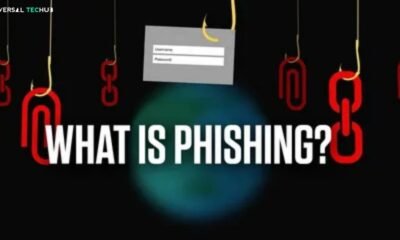
 Phishing attack6 months ago
Phishing attack6 months agoWhat is Spear Phishing and How You Can Identify This Scam?
-

 Social engineering attack8 months ago
Social engineering attack8 months agoBaiting Attacks Explained: A Closer Look at Cyber Threat Tactics
-

 Social engineering attack6 months ago
Social engineering attack6 months agoWhat are Social Engineering Attacks – A Complete Guide to Cyberattacks Prevention
-

 Social engineering attack8 months ago
Social engineering attack8 months agoSpear Phishing Attack: A Targeted Cyber Threat
-

 Social engineering attack8 months ago
Social engineering attack8 months agoWhat is spear phishing attack? A detailed guide
-

 Phishing attack6 months ago
Phishing attack6 months agoWhat Are Phishing Emails? A guide for you
-
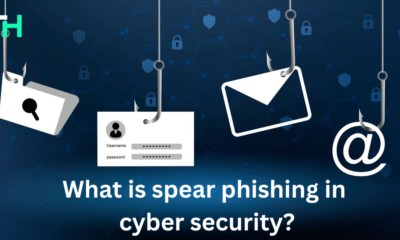
 Social engineering attack8 months ago
Social engineering attack8 months agoWhat is spear phishing in cyber security?
-
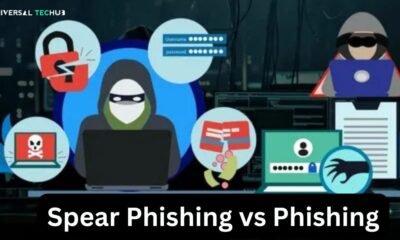
 Social engineering attack8 months ago
Social engineering attack8 months agoSpear phishing vs phishing: Understand the Risks

